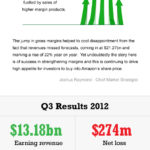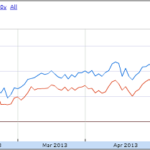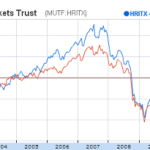Master limited partnerships are one of the fastest growing investments on Wall Street. Oil and gas companies divest high cost assets with MLP issues while investors find MLPs attractive for their high yields and tax benefits.
Investors who favor sector ETFs as a way to get broad exposure have plenty of choice in master limited partnerships. Every single major issuer has their own MLP exchange-traded fund, with a new one from Global X expected to launch on Tuesday, January 15th.
MLP ETFs have a few advantages over direct ownership of MLP units:
- K-1 avoidance – One of the major deterrents to investing in MLPs is the K-1 tax form for partnerships. MLP ETFs are incorporated, which removes the need for the investor to claim the MLP on his or her taxes as a partnership.
- Buy and hold – MLPs are best bought and owned for a very long time for the best possible returns and tax advantages. MLP ETFs offer diversification that allows for a simple buy and hold MLP investing strategy.
These advantages might not exceed the cost of using an ETF to buy into the whole industry. For one, popular ETFs are incorporated, which reduces the benefit of the MLP structure when it comes to taxation. Secondly, the diversification from an MLP ETF might provide for more protection from market risk, but not necessarily business risk. Large MLPs are arguably as diversified as any given fund of multiple ETFs. That said, we’ll look at a few of the choices in MLP ETFs and compare their holdings and cost to carry.
The largest of MLP ETFs by assets is that from JP Morgan (JPM) which tracks the entire master limited partnership sector. The Alerian MLP Index (AMJ) is an ETN, not an ETF, but that provides for nearly perfect tracking of the Alerian MLP Index, which is the standard benchmark for tracking MLPs as a whole. Float-adjusted and market-cap weighted, this ETN has the most exposure to larger MLPs. As it is an ETN, the tax benefits of owning an MLP are not passed on to the investor, but neither is the complicated K-1 form. The annual expense ratio of .85% has not been a deterrent to investors in part because the ETN offers excellent tracking of the index. AMJ has been the best performing MLP product over any comparable period for the funds in this article.
The second-largest MLP product tracks a similar Alerian MLP Infrastructure Index, which is an index put together from the 25 largest MLPs by the NYSE. Market cap weighted and set up as a C-Corp, the Alerian MLP ETF (AMLP) does not pass on a K-1. To be considered in the index, constituents must earn 50% of EBITDA from assets which are not directly affected by changes in a commodity price – pipelines, refineries, etc.
The Global X MLP ETF (MLPA) follows as a proxy for broad MLP exposure similar to the Alerian MLP ETF (AMLP). The fund tracks 31 different MLPs in a similar weighting as AMLP but delivers exposure with an annual fee of only .40% per year, 45 basis points lower than its competitors. It isn’t without its flaws, however. The fund is taxed as a C-Corp which removes the benefits of a partnership for tax status.
A new fund from Global X will give investors access to a particular corner of the MLP space by market cap. The Global X Junior MLP ETF (MLPJ) will track 24 different MLPs between the size of $200 million and $2.5 billion, essentially removing the largest MLPs like Kinder Morgan Energy Partners LP (KMP) or Enterprise Products Partners L.P. (EPD). With an annual expense of .75%, the fund will be less expensive to hold than funds from Global X competitors, but more expensive than Global X’s broad MLPA fund.
Are MLP ETFs Worth It?
Investors have to ask what they really stand to gain from MLP ETFs and ETNs compared to a direct investment in MLPs. While the tax complications of the K-1 can turn away investors, those who do their own taxes or pay a flat rate to have their taxes completed would likely generate a higher total return by selecting their own MLPs directly and weighting them in a manner consistent with an MLP ETF.
MLP ETFs have the largest tracking error of any sector. From year to year, the tax differentials can result in 6-7% differences in returns between an MLP ETF and its underlying assets. Investors who want diversification, high yields, and market-beating returns from MLPs would have to own the MLPs directly. Those who are willing to pay a high price for convenience would be just fine with MLP ETFs. The best MLP product is the largest; the Alerian MLP Index ETN (AMJ). Incidentally, some additional key resources to consider include this full listing of over 80 MLPs by ticker and also an explanation of why MLPs and IRAs don’t mix.
Disclosure: No position in any tickers mentioned here.











{ 0 comments… add one now }